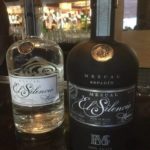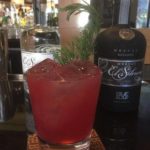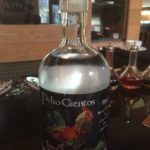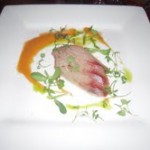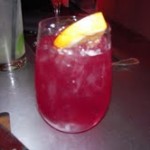- El Silencio’s Joven and Espadin spirits
- Conejo Loco: Crazy Rabbit cocktails
- Ocho Cientos Sotol
Mezcal: it’s not your frat-boy tequila. Ancient, yet new on the American bar scene, it’s tequila’s stylish post-hipster, more adult cousin. Mezcal’s not sloshing about in shot glasses hidden behind a curtain of overpowering lime, but proudly shining, served neat (see: fine scotch) to showcase a depth and range of flavor unencountered in other agave-based spirits.
As we know, mezcal and tequila are made from agave, a wide-ranging succulent in Mexico. The major difference between the two is the production method. The piña, or heart of the agave plant, is removed. It’s then roasted, slowly, underground. It’s buried in the earth, covered by hot stones – creating the signature smokiness. The resultant mash gets a special treatment; it is crushed by a stone pulled by a donkey. Then comes the distillation. Tequila, meanwhile, is baked, or more often, industrially processed, leaving in astringent flavors. Finally, mezcals traditionally comes from Oaxaca, where the agave plant is most common. However, like with fine wines (and Scotch), the terroir truly comes out in mezcals. The highly specific local soil imbues the plant with unique flavors, which is why mezcals are really a small-batch liquor.
This is true for El Silencio, carried at just a few select restaurants and bars across the country, including the one at the Four Seasons in Georgetown. El Silencio is an artisanal mezcal, produced in San Baltazar Guelavila, Oaxaca. The family-run business is now nine generations strong. According to the website, El Silencio uses only “carefully selected 10-12 year old agaves… and the production does not involve any additives or industrial processes.”
At the bar, master mixologist Torrence T. Swain poured us El Silencio’s two options: Joven and Espadín. Joven is an “ensamble” mezcal, a blend of three different agave plants: espadin, Mexicano, and tobasiche. This double-distilled blend is quite smooth, very different from what might be first expected. The nose is full of floral and vegetal notes, like jasmine and cucumber. The flavor is full of tea and lemon, and ends with a light, white pepper finish in the back of the throat. Joven is something of a welcome mat for mezcal, not too forceful, turning the page on mezcal drinking to provide context that it can be complex and intricate. It’s a perfect mezcal for sipping on a veranda, shaded from a hot tropical sun after a day in the agave fields.
Espadín, as might be expected, is 100% espadín agave. It’s even smaller batch than Joven, from highly specific agave plants. “It’s ready to do the heavy lifting in a cocktail.” Strong and bold, it’s quite assertive on the palate with a significant bite. The nose is strongly vegetal, and flavor notes feature leather and earth, with a black pepper finish. It’s a more concentrated flavor, better for a mixologist to play with.
And thus our mixologist tour guide took us down cocktail lane. We landed at the Conejo Loco (“crazy rabbit”), so named because of the mezcal spirit’s origin story related to a rabbit goddess. The mezcal, already a bit smoky, receives a shock of spice, infused with Fresno pepper. An addition of pomegranate juice adds sweetness, a squeeze of lime for citrus, and most spectacularly, it’s served with a sprig of rosemary, which adds an aromatic herbal element. Certainly a great way to use this spirit.
Finally, we got a sneak peak of Ocho Cientos Blanco Sotol, also from Mexico. However, instead of agave, it’s handcrafted from the Sotol plant, also called desert spoon in English. It’s native to Chihuahua in the far north of Mexico and tastes nothing like tequila or mezcal. Incredibly smooth, intense, earthy, and herby. Salud!
– ESC

